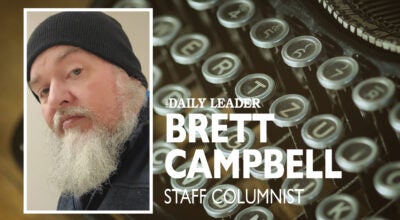Campfires in July: pleasure or pain
Published 8:11 pm Saturday, July 11, 2015
Is anything more enjoyable than a campfire on a cool, crisp night? The smell of the fire. The crackle of wood burning. The warm glow. It’s heavenly.
The same can’t be said for a fire on a humid July night. It’s downright hellish.
But with my niece and nephew visiting from Texas, I had little choice but to light a bonfire this weekend. Even after sundown, the temperature hovered around 80. Once the fire was burning bright, it must have been at least 100 degrees near the blaze.
All the usual, fun fire activities become downright painful during the summer. Roasting marshmallows is a sweaty, sticky mess. Gathering and adding wood to the fire is a chore. Sitting near the blaze is like facing a blast-furnace.
So why bother with a bonfire in July, you ask? Because the look on the faces of those children as the fire grew brighter was priceless. Children, it seems, are impervious to the heat. They don’t care that it’s 100 degrees — they want a fire. They can run around like wild people, dancing in the fire light covered in sweat, and never complain.
Our weekend visitors live in what my children call “the city,” though it’s really a subdivision outside a sizeable town near Houston, Texas. The houses are stacked on top of each other and bonfires are certainly not allowed. So anytime they visit, I grant them their one request — a fire.
I can’t stand the thought of them growing up without the experiences that accompany a good fire. Every child should know the smell of burning wood and the taste of charred-black hotdogs.
There’s something about fire that taps into our primordial beings. Building a fire and watching it consume wood that you’ve cut is therapeutic. It’s satisfying to know that should the world dissolve into a Mad Max chaos, at least we’ll be warm because we have fire.
Though there are deep and spiritual ways that we differ from other animals, the ability to build fire is one that sticks out to me at the moment. Monkeys and apes may can reason, learn language and use toilet paper — but I’d like to see them light the perfect teepee-style fire with just one match.
As a boy, that was the test of your outdoor survival skills: could you light a fire with just one match, even in the rain? Though it may sound easy, it is not. Building a fire is as much art as science. Where the tender and kindling are placed, how the larger sticks are stacked, when to add the big logs — it must be done right if that one match is to be enough. The biggest mistakes I see from fire amateurs are not having enough tender or kindling and not leaving enough room for the fire to breathe.
I learned the proper way to build a fire in the Boy Scouts — and the countless camping trips I took with my father. He was a one-match man without fail. It’s a tradition I hope to keep burning bright. My children will grow up with the one-match rule. And, hopefully, their cousins will as well.
Sure, they will know the shame of failing, watching their one match burn out while the tiny flame dies. But one day the lessons of fire building will pay off, and the sense of pride and accomplishment will burn with them the remainder of their lives.
It may be a silly thing to pass along to future generations. But on a cool, crisp night 30 years from now, they’ll be thankful their father taught them the same fire-building skills my father taught me.
Luke Horton is the publisher of The Daily Leader.



